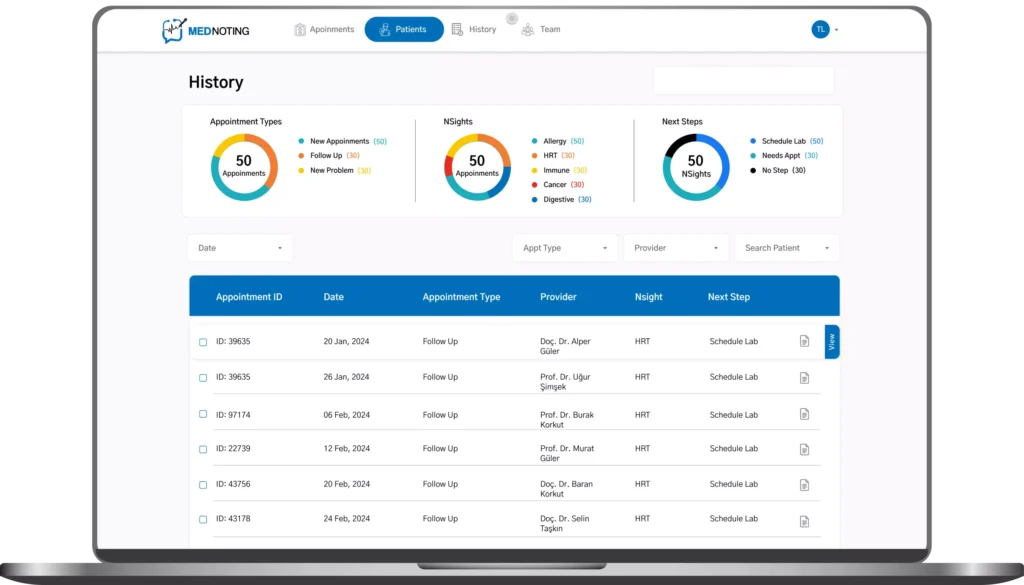Managing patient accounts efficiently is crucial for healthcare providers. A Consolidated Patient Account Center (CPAC) simplifies financial operations, enhancing patient satisfaction and streamlining administrative tasks. But what exactly is it, and why is it important? Let’s explore.

What is a Consolidated Patient Account Center?
A Consolidated Patient Account Center (CPAC) is a centralized system that manages billing, payments, and patient financial interactions. It integrates multiple accounts into a single platform, allowing for easier tracking and improved transparency in healthcare billing.
A CPAC functions as an administrative entity within healthcare organizations that consolidates financial management tasks across multiple facilities. By unifying account management, a CPAC minimizes redundancies, ensures consistency in financial documentation, and provides a holistic view of patient transactions.
Importance of a Consolidated Patient Account Center
With rising healthcare costs and complex billing structures, having a CPAC helps in:
- Reducing billing errors
- Enhancing financial transparency
- Improving patient satisfaction
- Streamlining administrative workload
- Creating standardized policies for account management
- Reducing inefficiencies caused by disparate billing systems
How a Consolidated Patient Account Center Works
A CPAC functions as a hub for:
- Centralized billing
- Payment processing
- Account reconciliation
- Insurance claim tracking
- Cross-facility financial reporting
By consolidating these functions, CPACs not only improve financial efficiency but also ensure compliance with regulatory frameworks.
Key Components of a Consolidated Patient Account Center
- Billing and Invoicing – Generates accurate bills for patients.
- Payment Processing – Manages multiple payment methods.
- Insurance Claims Management – Tracks claims and ensures timely reimbursements.
- Customer Support Services – Assists patients with financial queries.
- Data Analytics and Reporting – Provides financial insights and trends.
- Regulatory Compliance – Ensures adherence to financial and healthcare regulations.
- Integration with EHR Systems – Facilitates seamless financial and medical record alignment.
Benefits of a Consolidated Patient Account Center
- Enhanced Efficiency – Automates and simplifies billing processes.
- Improved Accuracy – Reduces errors in patient accounts.
- Cost Savings – Lowers administrative costs.
- Better Patient Experience – Provides transparency and support in financial matters.
- Faster Claims Processing – Minimizes reimbursement delays.
- Reduced Operational Costs – Eliminates redundant administrative efforts.

Challenges in Implementing a Consolidated Patient Account Center
- Integration Issues – Merging multiple systems can be complex.
- Data Security Risks – Handling sensitive patient information requires strict compliance.
- Staff Training – Employees need proper training to handle the new system.
- Resistance to Change – Some healthcare providers may be hesitant to adopt new technology.
- Interoperability Issues – Ensuring compatibility with existing hospital information systems.
Technologies Used in a Consolidated Patient Account Center
- AI & Machine Learning – Automates billing and fraud detection.
- Cloud Computing – Provides scalable and secure storage.
- Blockchain – Ensures transparent and tamper-proof transactions.
- Data Analytics – Helps in financial forecasting and decision-making.
- Robotic Process Automation (RPA) – Enhances efficiency by reducing manual data entry.
Security and Compliance Considerations
A CPAC must comply with:
- HIPAA (Health Insurance Portability and Accountability Act)
- GDPR (General Data Protection Regulation)
- PCI DSS (Payment Card Industry Data Security Standard)
- HITECH Act (Health Information Technology for Economic and Clinical Health)
Ensuring data encryption, secure access, and compliance audits is crucial.

How to Choose the Right Consolidated Patient Account Center
When selecting a CPAC, consider:
- Scalability – Can it grow with your organization?
- Security Measures – Does it meet compliance standards?
- User-Friendliness – Is the interface easy to navigate?
- Customer Support – Is assistance readily available?
- Integration Capabilities – Can it connect with existing hospital systems?
Best Practices for Managing a Consolidated Patient Account Center
- Regular Audits – Ensure financial accuracy.
- Patient Education – Help patients understand their bills.
- Automation – Reduce manual errors.
- Data Security Measures – Prevent breaches and fraud.
- Cross-Department Collaboration – Engage finance, IT, and healthcare teams for better management.
How CPAC Improves the Patient Experience
A well-implemented CPAC offers:
- Clear Billing Statements – Reduces confusion.
- Easy Payment Options – Improves convenience.
- Faster Issue Resolution – Enhances patient trust.
- 24/7 Support – Provides assistance when needed.
- Personalized Payment Plans – Tailors financial solutions for patients in need.
The Future of Consolidated Patient Account Centers
The future of CPACs includes:
- AI-driven Automation – Enhancing efficiency.
- Blockchain for Security – Improving transparency.
- Mobile Payment Integration – Offering convenience.
- Personalized Billing – Tailoring financial services for patients.
- Predictive Analytics – Anticipating patient financial needs.
Conclusion
A Consolidated Patient Account Center is a game-changer in healthcare financial management. By centralizing patient accounts, automating processes, and improving transparency, it enhances both provider efficiency and patient satisfaction. With technological advancements, CPACs will continue to evolve, making healthcare billing more seamless and efficient.
FAQs
1. What are the main functions of a Consolidated Patient Account Center?
A CPAC manages billing, payments, insurance claims, and financial customer support for healthcare providers.
2. How does a CPAC improve patient experience?
It offers clear billing, multiple payment options, and responsive customer support, reducing financial stress for patients.
3. What technologies are used in a CPAC?
AI, blockchain, cloud computing, robotic process automation, and data analytics enhance efficiency and security in a CPAC.
4. Are CPACs secure?
Yes, they follow strict compliance regulations such as HIPAA, GDPR, and PCI DSS to protect patient data.
5. How can healthcare providers implement a CPAC effectively?
By choosing scalable technology, ensuring staff training, prioritizing security, and maintaining transparent communication with patients.





